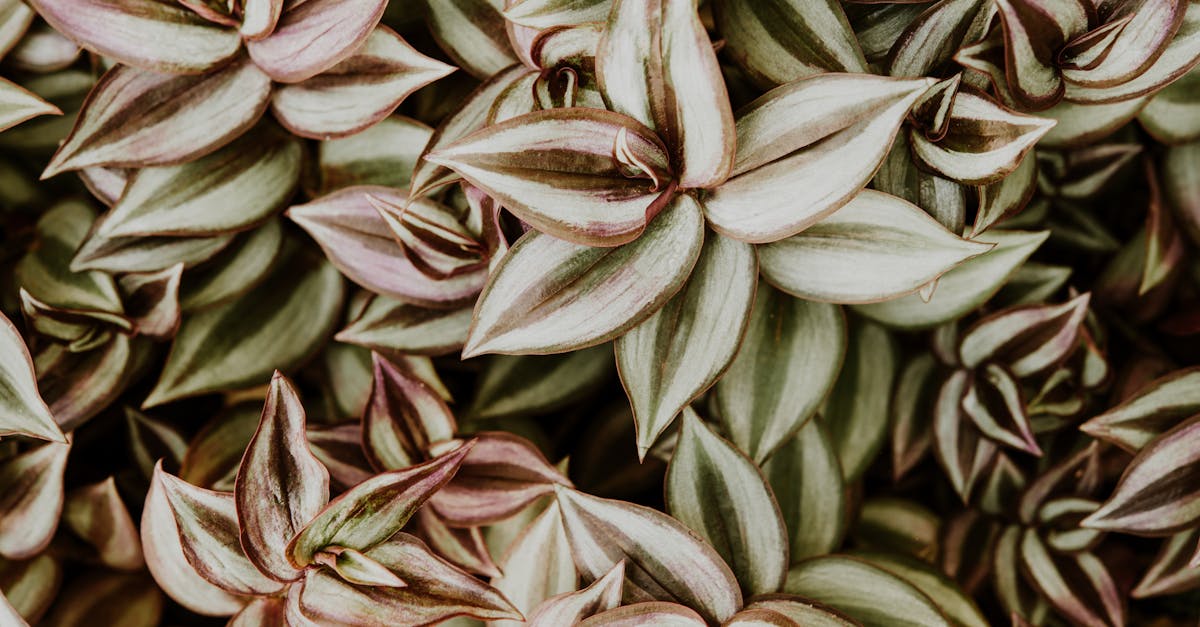How to Care for Tradescantia: A Detailed Guide
Tradescantia, commonly known as spiderwort or inch plant, is a versatile and attractive houseplant known for its colorful foliage and easy care requirements. Native to the Americas, this plant is popular for its rapid growth and ability to thrive in various indoor conditions. Here’s a comprehensive guide to help you care for your Tradescantia plant.
1. Light Requirements
Tradescantia plants prefer bright, indirect light but can tolerate some direct sunlight. They thrive near east or west-facing windows where they receive plenty of light but are protected from the harsh midday sun. Insufficient light can cause the vibrant leaf colors to fade and the plant to become leggy.

2. Watering
Tradescantia likes its soil to be consistently moist but not waterlogged. Water the plant when the top inch of soil feels dry. Ensure the pot has drainage holes to prevent water from accumulating at the bottom, which can lead to root rot. Reduce watering frequency during the winter months when the plant’s growth slows.
3. Humidity
Tradescantia appreciates higher humidity levels but can adapt to average indoor humidity. If your home is particularly dry, especially in winter, consider using a humidifier, placing a tray of water near the plant, or grouping it with other plants to increase humidity. Regular misting can also help keep the leaves healthy.
4. Temperature
This plant prefers temperatures between 60-80°F (16-27°C). Avoid placing it in areas where temperatures can drop below 50°F (10°C) or where it is exposed to drafts, as sudden temperature changes can stress the plant.

5. Soil and Potting
Tradescantia thrives in well-draining soil. A standard houseplant potting mix works well. You can add perlite or sand to improve drainage if necessary. Repotting is typically required every 1-2 years, or when the plant becomes root-bound. Choose a pot that is one size larger than the current one.
6. Fertilizing
Feed your Tradescantia every 4-6 weeks during the growing season (spring and summer) with a balanced, water-soluble fertilizer diluted to half strength. Reduce feeding during the fall and winter when the plant’s growth naturally slows. Over-fertilizing can lead to salt buildup in the soil, which can harm the plant.
7. Pruning
Regular pruning helps maintain the shape and encourages bushier growth. Pinch back the tips of the stems to promote branching. Remove any yellow or damaged leaves to keep the plant looking healthy and vibrant. Pruning also helps prevent the plant from becoming too leggy.
8. Propagation
Tradescantia is easy to propagate through stem cuttings. Cut a healthy stem just below a node, ensuring it has at least one leaf and a few inches of stem. Place the cutting in water or moist potting mix. If using water, wait until roots develop before planting in soil. If planted directly in soil, keep the medium moist until new growth appears.
9. Pest and Disease Management
Tradescantia can be susceptible to pests such as spider mites, aphids, and mealybugs. Regularly inspect the plant for signs of pests, such as webbing, sticky residue, or visible insects. Treat infestations with insecticidal soap, neem oil, or by wiping the leaves with a damp cloth. Good air circulation and proper watering practices can prevent most fungal and bacterial diseases.
10. Leaf Care
Tradescantia leaves can collect dust, which can interfere with photosynthesis. Clean the leaves gently with a damp cloth or sponge to keep them looking their best. Avoid using leaf shine products, as they can clog the pores on the leaves.
Tradescantia, with its striking foliage and easy care requirements, is a delightful addition to any indoor garden. By providing the right light, moisture, and environment, you can enjoy its vibrant growth and beauty for years to come. Regular maintenance, including proper watering, fertilizing, and pruning, will ensure your Tradescantia remains healthy and attractive. Whether you are a seasoned gardener or a beginner, Tradescantia offers a rewarding and visually captivating plant care experience.

In conclusion, caring for Tradescantia plants involves providing them with the right amount of sunlight, water, and humidity. These hardy plants are low maintenance and can thrive in a variety of conditions, making them a popular choice for indoor gardens. By following the tips outlined in this article, such as keeping the soil moist but well-drained and providing regular fertilization during the growing season, you can ensure that your Tradescantia plant remains healthy and vibrant. Additionally, regular pruning and repotting will help to promote growth and prevent overcrowding. Overall, Tradescantia plants are a great addition to any home or office space, adding a touch of greenery and beauty to your surroundings. So go ahead and bring home a Tradescantia plant today, and enjoy the benefits of having a beautiful and easy-to-care-for plant in your life.
